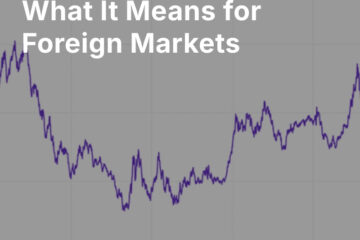Market Summary
The bull market that began in March, 2009 has now become the longest in U.S. history. While corrections are possible at any time, and there are any number of potential catalysts for such a correction, we see nothing that suggests a bear market is imminent. The most important indicators — credit conditions, inflation, interest rates, and earnings — are unanimous. As we’ve frequently observed over the past year or more, bull markets often deliver some of their best returns in their final stages. The current bull is mature, and it will end: but not yet, and we believe that it will offer significant gains before it does.
U.S. Stocks
As we write, the U.S. S&P 500 index is poised to break out above its old highs from late January, helped by the promise of renewed trade negotiations between the U.S. and China. Technology leaders seem to be taking a brief rest, with retailers and other consumer discretionary stocks enjoying a moment in the sun as news flow emphasizes good employment and wage growth for U.S. workers.
We suspect, though, that the market’s anointing will eventually return to tech, due to the industry’s robust growth profile. When there are political troubles, attention will go to companies which enjoy long-term growth tailwinds and can grow profits through thick and thin. That describes many U.S. tech leaders — retailers, cloud service and software providers, entertainment, and social media.
Similarly, as trade negotiations proceed, whenever there are troubles,investment dollars will tend to find their way to small-cap U.S. stocks — especially small-cap growth stocks. These stocks will also attractinvestment if a strong dollar suggests trouble for U.S. exporters.
Emerging Markets
As we noted above, emerging markets have been beaten down primarily by trade-war fears and by a rising dollar. As negotiations bear fruit, and trade-war fears subside, some emerging markets may present trading opportunities, though we remain alert to the possibility of EM financial instability caused by excessive exposure to dollar-denominated debt.
Gold
Sanctions and debt troubles in some emerging markets, particularly Turkey, and possibly Russia, could result in gold sales by their central banks. That would put further downward pressure on gold, in addition to the general pressure on the gold price from a strong U.S. dollar. Some technicians we respect, who have made good calls on gold this year, believe that if gold breaks below $1075, its next target is $850. In the longer term we believe that gold will move gradually higher, but this will be difficult as long as the dollar remains strong.
Cryptocurrencies
No significant catalysts are on the horizon to prompt a rapid end to the current crypto bear market. Longer term, the required catalysts continue to be (1) crypto adoption into the mainstream financial system; (2) the approval of crypto exchange-traded products; (3) technical improvements to resolve latency and throughput issues; and (4) the integration of cryptocurrencies into financial regulatory frameworks. Progress is being made on all fronts, but the tone of the market will only change if there is steady progress. Another positive will be the withering of tokens with no real use cases as ICO proceeds are liquidated and leave the casino, making room for projects with real-world applications.
Thanks for listening; we welcome your calls and questions.



